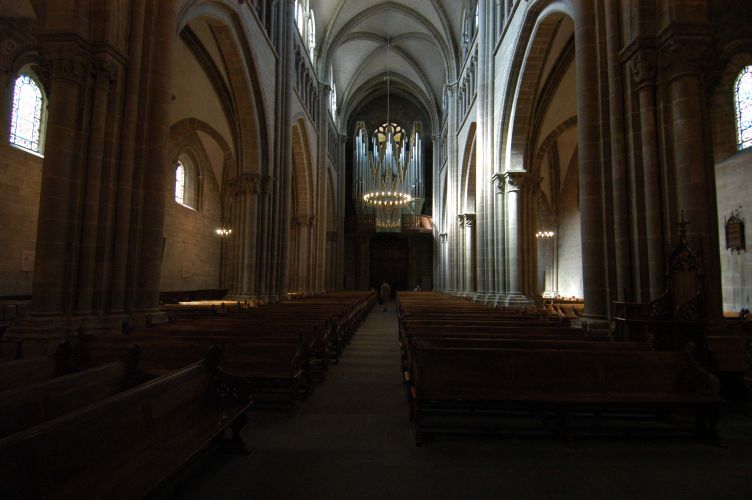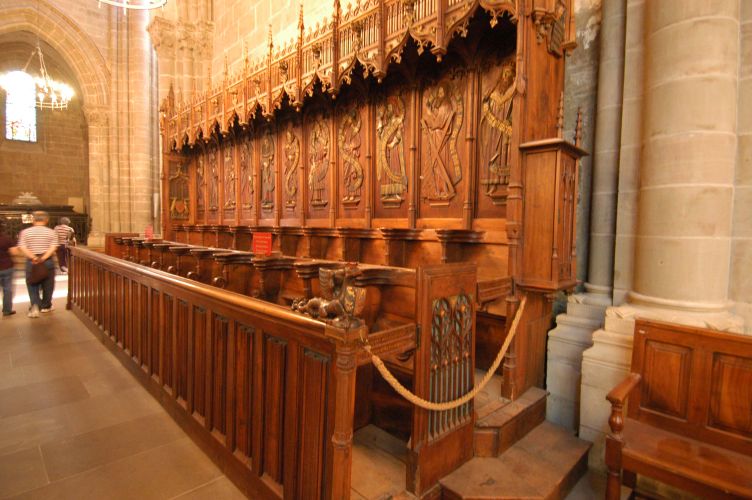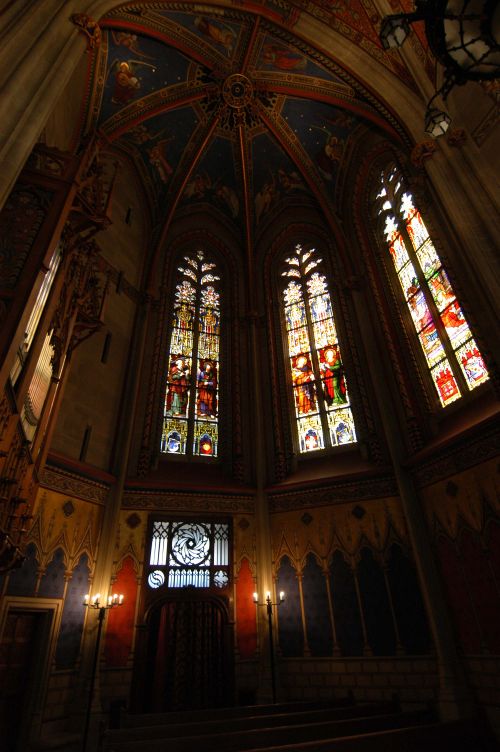Today was our Geneva day (or half-day since we were traveling to Zurich in the afternoon). After breakfast we walked to the Old Town. Our hotel's website described their location as being "at the foot of the Old Town". And it was absolutely correct, the Old Town was just up the street, a very steep street.
Old Town is a maze of narrow cobblestone streets filled with art galleries, museums, boutique shops, cafes, restaurants and historical landmarks. It is dominated by the 850-year-old Cathedral of St. Pierre. The site has been occupied since the at least 4th century and there is an archaeological site underneath the cathedral. One of Geneva's most famous citizens, the Protestant reformer John Calvin, preached at the St. Pierre from 1536 to 1564. At that time the cathedral became the center of Protestantism and Geneva became known as "Protestant Rome".
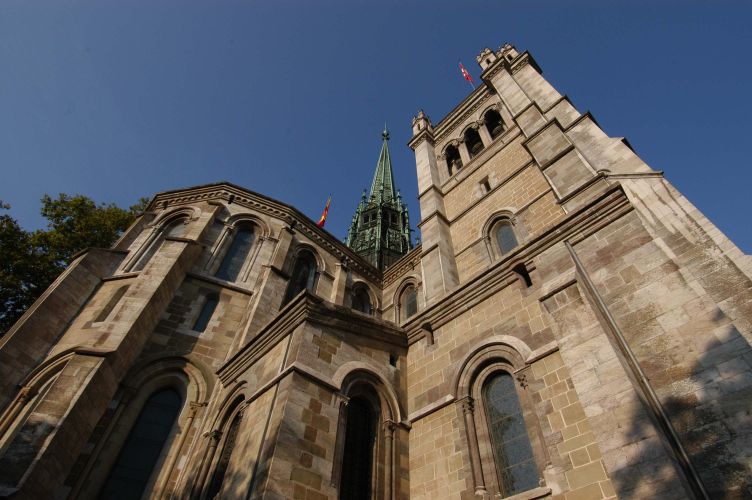
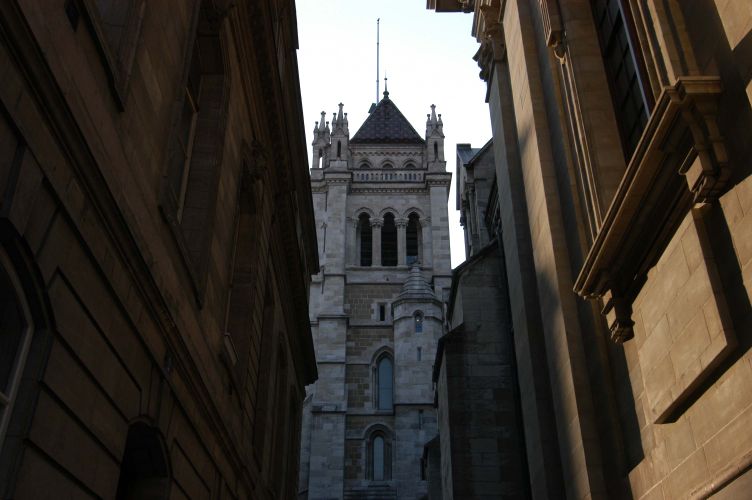 As we walked around the cathedral looking for the best picture angle, the carillon played the beautiful melody. The hourly bell tower recital has been conducted since the mid-18th century and the tune changes 11 times a year. The largest and the oldest of the bells even has a name - Clémence. It weighs over 6 tons and was hoisted to the tower in 1407.
As we walked around the cathedral looking for the best picture angle, the carillon played the beautiful melody. The hourly bell tower recital has been conducted since the mid-18th century and the tune changes 11 times a year. The largest and the oldest of the bells even has a name - Clémence. It weighs over 6 tons and was hoisted to the tower in 1407.
When Catholic cathedral became a Protestant church it was stripped of the lavish altars, statues, paintings and furniture.
Only the stalls and the stained glass windows remained. As the result, they stand out even more. The carved choir-stalls have duck-billed crowned dragons on each end and beautifully ornate images of 5 prophets, 5 apostles and the church's patron.
We got a fair idea of what the Cathedral must have looked like when we stepped into the side chapel (Maccabees' Chapel). It had been restored to its 15th century splendor and is very elaborately decorated.
A short walk from the cathedral took us to the 15th century Hotel De Ville (Town Hall). It still serves as the seat of government in Geneva and is the site of many political milestones. The first Geneva Convention was signed here in 1864 as part of the establishment of the International Red Cross and the League of Nations held its first general assembly here in 1920.
Across the street from the Town Hall is the Old Arsenal. It was built around 1630 and houses genuine cannons from the 17th and 18th century that used to protect the city ramparts. Colorful wall mosaics depict important chapters in Geneva's history including arrival of Julius Caesar in the city and the welcoming of Huguenot refugees during the Reformation.
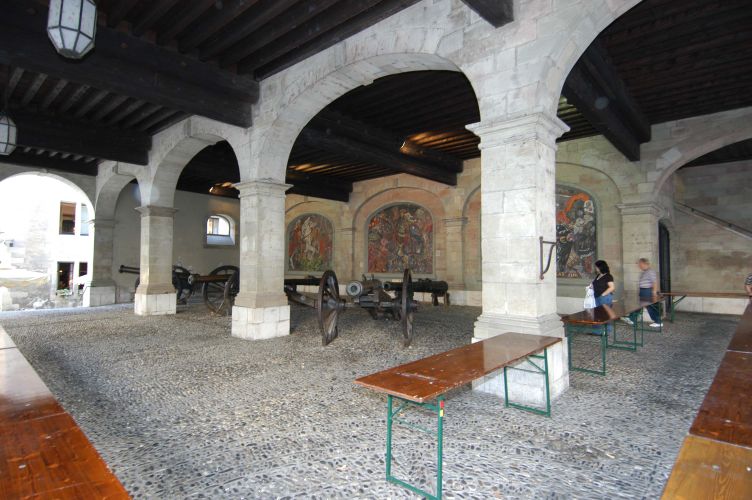 The Bourg-de-Four is the oldest public square in Geneva. It was once the site of a Roman forum and Julius Caesar assembled his troops here during one of his campaigns. It was also Geneva's main market place in medieval times. It remains a hub of activity and locals still gather around its 18th-century fountain decorated with flowers.
The Bourg-de-Four is the oldest public square in Geneva. It was once the site of a Roman forum and Julius Caesar assembled his troops here during one of his campaigns. It was also Geneva's main market place in medieval times. It remains a hub of activity and locals still gather around its 18th-century fountain decorated with flowers.
From the Old Town it was an easy walk down to the lake to visit Geneva's most recognizable landmarks - Jet d'Eau, the world's tallest fountain. Jet d'Eau dates back to 1891 when it was designed to release the additional water produced by the Rhône River's turbine house. The jet stream releases 132 gallons of water per second and shoots it 460 feet into the air. The water is aerated on the way up by a special nozzle, making it white. Without the air bubbles it would be practically invisible from the shore.
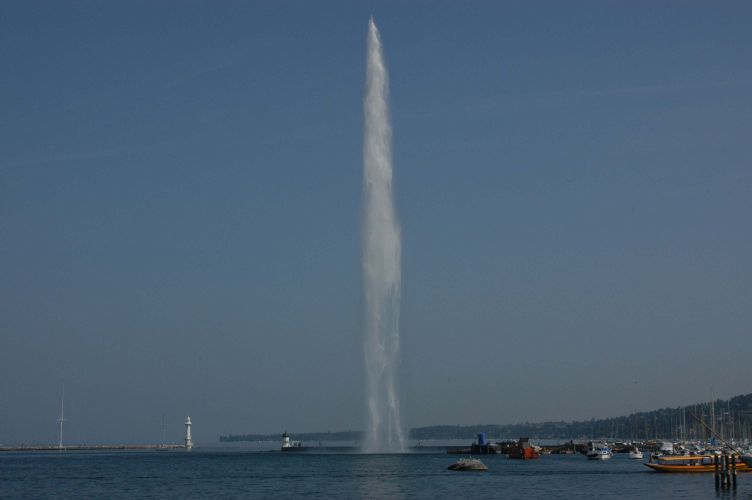 Another popular local landmark, the Flower Clock sits at the edge of the Jardin Anglais (English Garden). The clock face is made of more than 6,000 flowering perennials and annuals that are being replanted each season. It was created to symbolize the importance of Geneva's clock and watch industry and of course, true to Swiss efficiency, it always tells the right time. The garden itself is also very picturesque and is full of fountains and statues.
Another popular local landmark, the Flower Clock sits at the edge of the Jardin Anglais (English Garden). The clock face is made of more than 6,000 flowering perennials and annuals that are being replanted each season. It was created to symbolize the importance of Geneva's clock and watch industry and of course, true to Swiss efficiency, it always tells the right time. The garden itself is also very picturesque and is full of fountains and statues.
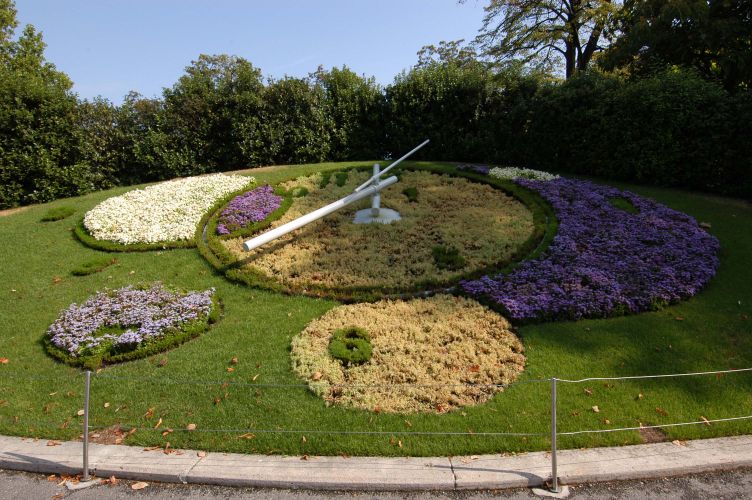 There was one more thing on our "to do" list for Geneva and that was to try "Filets de perche". This is one of the greatest local specialties - perch from the Lake Geneva. We had lunch at the guidebook recommended restaurant on Place de la Madeleine, a little square with a colorful merry-go-round, and were quite happy with our choice.
There was one more thing on our "to do" list for Geneva and that was to try "Filets de perche". This is one of the greatest local specialties - perch from the Lake Geneva. We had lunch at the guidebook recommended restaurant on Place de la Madeleine, a little square with a colorful merry-go-round, and were quite happy with our choice.
In the afternoon we left Geneva and took the direct train to Zurich. When we boarded the train we noticed a little pictogram suggesting that we were in the quiet compartment. Some of the routes have cars designated as the quiet areas where cell phones, music and loud conversations are not allowed. We got off the train at Zurich Airport and took the shuttle to our hotel. Hotel Allegra was located in Zurich's suburb of Kloten and was quite different from our hotel in Geneva. The rooms were quite a bit bigger but there was no air conditioner and breakfast and internet access were not included. From our window we spotted the grocery store across the street and went there for our breakfast and chocolate supplies.


